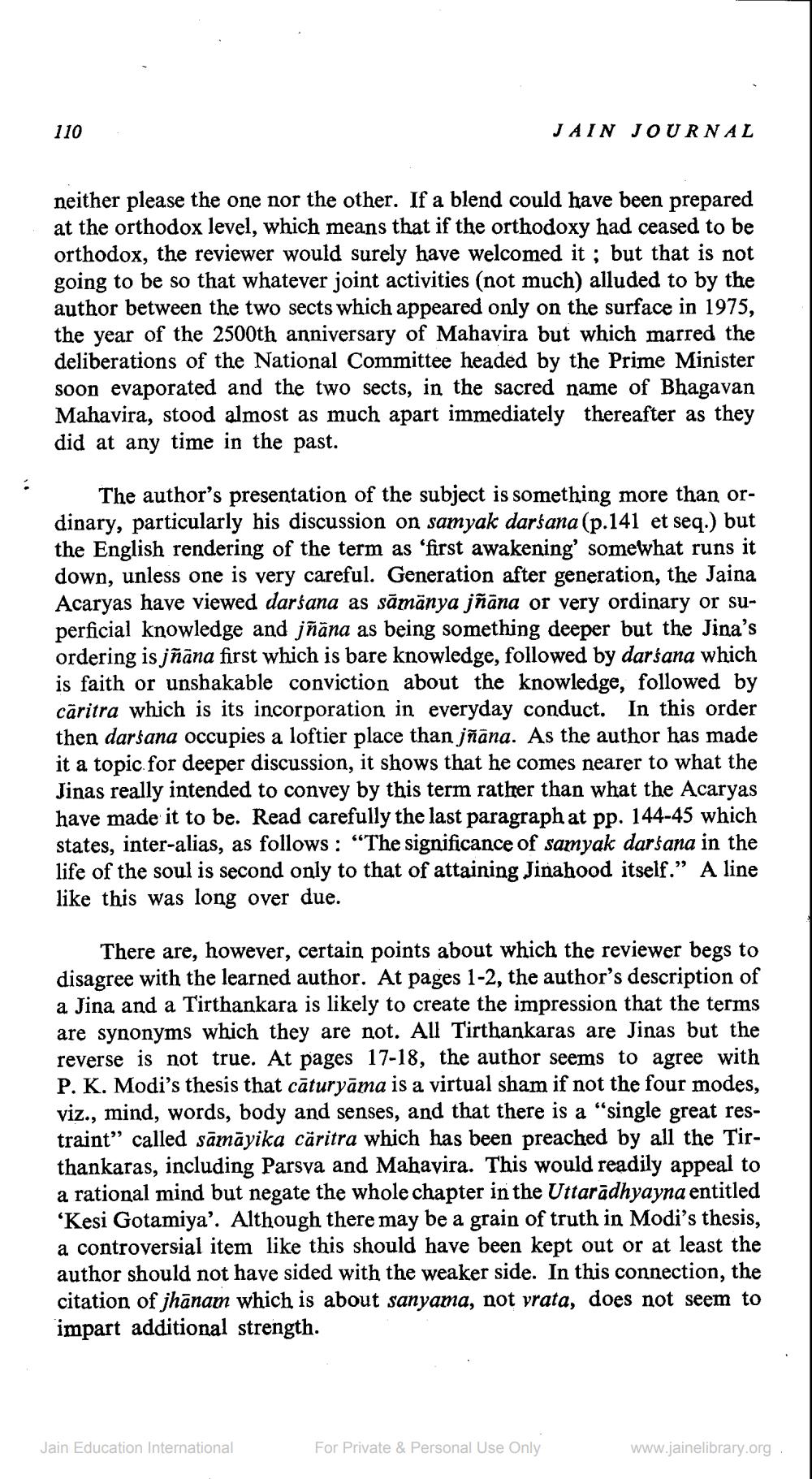________________
110
JAIN JOURNAL
neither please the one nor the other. If a blend could have been prepared
odox level, which means that if the orthodoxy had ceased to be orthodox, the reviewer would surely have welcomed it ; but that is not going to be so that whatever joint activities (not much) alluded to by the author between the two sects which appeared only on the surface in 1975, the year of the 2500th anniversary of Mahavira but which marred the deliberations of the National Committee headed by the Prime Minister soon evaporated and the two sects, in the sacred name of Bhagavan Mahavira, stood almost as much apart immediately thereafter as they did at any time in the past.
The author's presentation of the subject is something more than ordinary, particularly his discussion on samyak darśana (p.141 et seq.) but the English rendering of the term as 'first awakening' somewhat runs it down, unless one is very careful. Generation after generation, the Jaina Acaryas have viewed darśana as sāmānya jñāna or very ordinary or superficial knowledge and jñāna as being something deeper but the Jina's ordering is jñāna first which is bare knowledge, followed by darśana which is faith or unshakable conviction about the knowledge, followed by cāritra which is its incorporation in everyday conduct. In this order then darśana occupies a loftier place than jñana. As the author has made it a topic.for deeper discussion, it shows that he comes nearer to what the Jinas really intended to convey by this term rather than what the Acaryas have made it to be. Read carefully the last paragraph at pp. 144-45 which states, inter-alias, as follows: “The significance of samyak darśana in the life of the soul is second only to that of attaining Jinahood itself.” A line like this was long over due.
There are, however, certain points about which the reviewer begs to disagree with the learned author. At pages 1-2, the author's description of a Jina and a Tirthankara is likely to create the impression that the terms are synonyms which they are not. All Tirthankaras are Jinas but the reverse is not true. At pages 17-18, the author seems to agree with P. K. Modi's thesis that cāturyāma is a virtual sham if not the four modes, viz., mind, words, body and senses, and that there is a "single great restraint" called sāmāyika caritra which has been preached by all the Tirthankaras, including Parsya and Mahavira. This would readily appeal to a rational mind but negate the whole chapter in the Uttarādhyayna entitled 'Kesi Gotamiya'. Although there may be a grain of truth in Modi's thesis, a controversial item like this should have been kept out or at least the author should not have sided with the weaker side. In this connection, the citation of jhānam which is about sanyama, not yrata, does not seem to impart additional strength.
Jain Education International
For Private & Personal Use Only
www.jainelibrary.org




